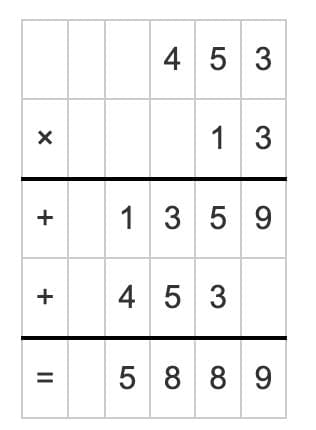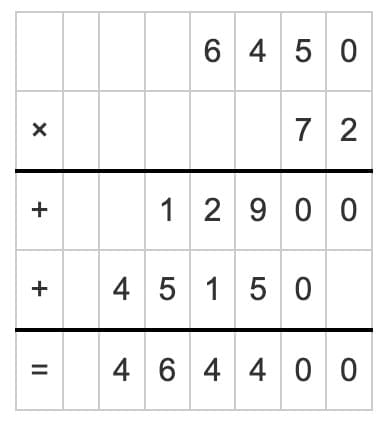|
When multiplying a number by 10, all digits shift one place to the left, and a zero is added at the end of the number. Example:
|
Card: 6 / 24 |
|
12 × 9 can be calculated as 12 × 9 = (10 + 2) × 9 |
Card: 10 / 24 |
|
True or False: Doubling one factor and halving another in multiplication changes the product. |
Card: 11 / 24 |
 Unlock all Flashcards with EduRev Infinity Plan Starting from @ ₹99 only
|
|
If you have 22 multiplied by 5, how can you use halving and doubling to find the answer? |
Card: 15 / 24 |
|
To use halving and doubling, you can halve one number and double the other: 22 × 5
Now multiply the easier numbers: 110 |
Card: 16 / 24 |
|
The result is 1,000, as 10 × 100 = 1,000. When multiplying by 100, the digits shift two places to the left, and two zeros are added at the end. |
Card: 22 / 24 |






















